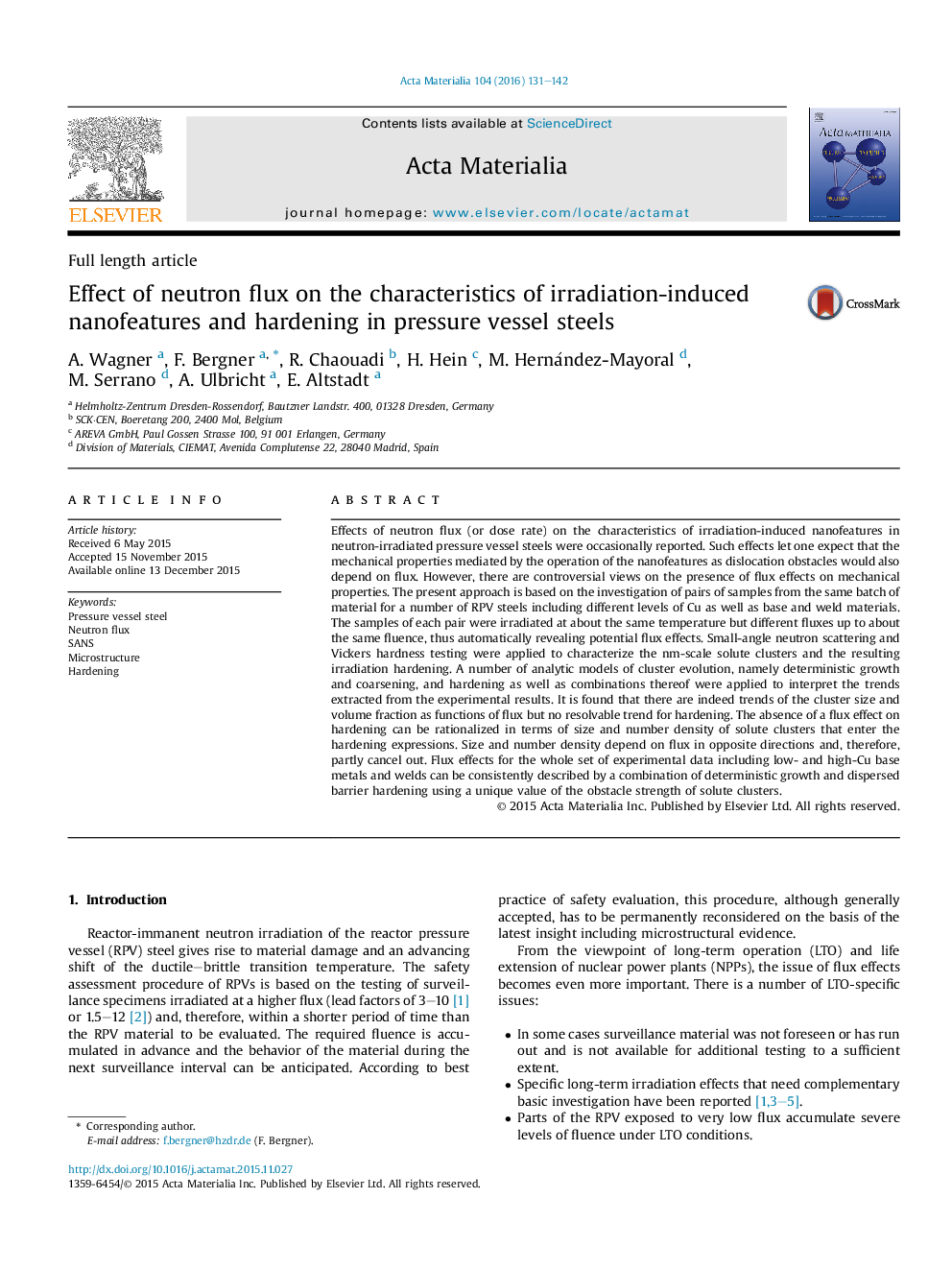| کد مقاله | کد نشریه | سال انتشار | مقاله انگلیسی | نسخه تمام متن |
|---|---|---|---|---|
| 1445154 | 1509572 | 2016 | 12 صفحه PDF | دانلود رایگان |
Effects of neutron flux (or dose rate) on the characteristics of irradiation-induced nanofeatures in neutron-irradiated pressure vessel steels were occasionally reported. Such effects let one expect that the mechanical properties mediated by the operation of the nanofeatures as dislocation obstacles would also depend on flux. However, there are controversial views on the presence of flux effects on mechanical properties. The present approach is based on the investigation of pairs of samples from the same batch of material for a number of RPV steels including different levels of Cu as well as base and weld materials. The samples of each pair were irradiated at about the same temperature but different fluxes up to about the same fluence, thus automatically revealing potential flux effects. Small-angle neutron scattering and Vickers hardness testing were applied to characterize the nm-scale solute clusters and the resulting irradiation hardening. A number of analytic models of cluster evolution, namely deterministic growth and coarsening, and hardening as well as combinations thereof were applied to interpret the trends extracted from the experimental results. It is found that there are indeed trends of the cluster size and volume fraction as functions of flux but no resolvable trend for hardening. The absence of a flux effect on hardening can be rationalized in terms of size and number density of solute clusters that enter the hardening expressions. Size and number density depend on flux in opposite directions and, therefore, partly cancel out. Flux effects for the whole set of experimental data including low- and high-Cu base metals and welds can be consistently described by a combination of deterministic growth and dispersed barrier hardening using a unique value of the obstacle strength of solute clusters.
Figure optionsDownload high-quality image (237 K)Download as PowerPoint slide
Journal: Acta Materialia - Volume 104, 1 February 2016, Pages 131–142
